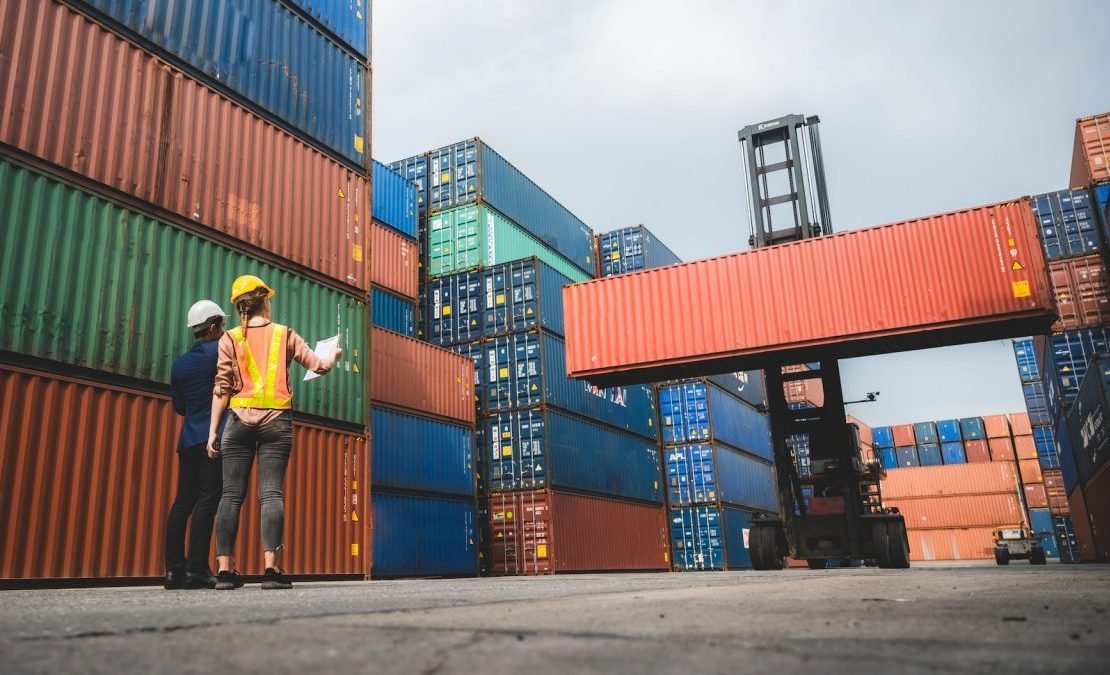In the world of international trade, understanding the various shipping terms and costs is crucial. For beginners, one of the most important terms to grasp is CIF—Cost, Insurance, and Freight. This term not only determines the total cost of goods but also impacts decisions related to logistics, pricing, and risk management. In this guide, we’ll break down what CIF means, how it’s calculated, and why it matters.
What is CIF?
CIF stands for Cost, Insurance, and Freight. It is a pricing term used in international trade where the seller is responsible for covering the costs, insurance, and freight of the goods until they reach the port of the buyer's destination. The CIF cost is calculated by adding the cost of the goods (C), insurance (I), and freight (F). For example, if the cost of goods is $10,000, insurance is $1,000, and freight is $2,500, the total CIF value would be $13,500.
What is CIF Cost?
CIF represents the combined cost of the goods, insurance, and freight to the buyer’s destination port. When a seller quotes a CIF price, they are responsible for delivering the goods to the port, including all costs involved until that point. This term is primarily used for goods transported via sea or inland waterways, ensuring that the buyer only needs to worry about additional costs once the goods reach the destination port.
What is CIF Price?
The CIF price is the total cost that the buyer will pay to receive the goods at their destination port. This price includes:
- Cost of Goods (C): The actual price of the products being sold.
- Insurance (I): The cost of insuring the goods while they are in transit.
- Freight (F): The cost of shipping the goods from the seller’s location to the buyer’s port.
For example, if you are importing machinery from China to the United States, the CIF price quoted by the seller would include the cost of the machinery, the insurance cost to protect the shipment during its journey, and the freight charges to transport the machinery to a U.S. port.
What is the Formula for CIF Cost?
The formula to calculate CIF cost is straightforward: CIF = Cost of Goods (C) + Insurance (I) + Freight (F)
Let’s break this down with an example:
- Cost of Goods (C): $10,000
- Insurance (I): $1,000
- Freight (F): $2,500
- CIF Value: $10,000 + $1,000 + $2,500 = $13,500
This calculation ensures that you, as the buyer, know the total cost of receiving the goods at your port, including all the necessary expenses covered by the seller.
What is the CIF Unit Cost?
The CIF unit cost refers to the CIF cost on a per-unit basis. If you are importing 100 units of a product and the total CIF value is $13,500, the CIF unit cost would be calculated as follows: CIF Unit Cost = Total CIF Value / Number of Units CIF Unit Cost = $13,500 / 100 = $135 per unit
This helps in determining the cost per unit, including all the necessary charges up to the point of delivery at the destination port.
How to Calculate CIF Price from FOB?
Free on Board (FOB) is another common term in international trade, which differs from CIF in that the buyer assumes responsibility for the goods once they are loaded onto the shipping vessel. To calculate CIF price from FOB, you would add the cost of insurance and freight to the FOB price: CIF Price = FOB Price + Insurance + Freight
For example, if the FOB price of goods is $9,000, insurance is $1,000, and freight is $2,500, the CIF price would be: CIF Price = $9,000 + $1,000 + $2,500 = $12,500
This method allows you to compare different pricing terms and choose the one that best fits your needs.
Understanding CIF Value in Customs
When importing goods, customs authorities often use the CIF value to determine the import duties and taxes that you’ll need to pay. The CIF value is considered because it represents the total cost of the goods arriving at the destination port. For example, if the import duty is 5% of the CIF value, and the CIF value is $13,500, the duty would be: Import Duty = 5% of $13,500 = $675
Knowing the CIF value helps in estimating the total cost involved in importing goods, including the duties and taxes that need to be paid.
How to Calculate Export Price Using CIF
When calculating the export price of goods using CIF, it’s essential to include all components—cost, insurance, and freight. This ensures that your pricing covers all necessary expenses and provides a competitive yet profitable quote to the buyer. Here’s a step-by-step process:
- Determine the cost of goods: Start with the base price of the product.
- Calculate insurance: Estimate the insurance cost based on the value of the goods and the risk involved.
- Estimate freight: Obtain quotes for shipping the goods from the point of origin to the destination port.
- Add these components: Combine the cost, insurance, and freight to arrive at the CIF export price.
For instance, if the cost of goods is $15,000, insurance is $1,500, and freight is $3,000, the CIF export price would be: CIF Export Price = $15,000 + $1,500 + $3,000 = $19,500
This ensures that all costs are covered and that the buyer understands the total price they will pay to receive the goods.
Common Mistakes to Avoid When Calculating CIF Cost
Calculating CIF cost might seem straightforward, but there are common pitfalls that can lead to miscalculations or misunderstandings. Here are some mistakes to avoid:
- Ignoring currency fluctuations: Always ensure that all components (cost, insurance, and freight) are calculated in the same currency to avoid discrepancies.
- Underestimating insurance needs: Failing to account for the full value of the goods can result in inadequate insurance coverage, leading to potential losses.
- Not considering additional port charges: While CIF covers costs up to the destination port, additional charges at the port, such as handling fees or terminal charges, should be considered by the buyer.
- Incorrect freight estimation: Overestimating or underestimating freight costs can significantly affect the CIF value. It’s essential to obtain accurate freight quotes from reliable shipping companies.
Comparison: CIF vs. FOB vs. EXW
When dealing with international trade, understanding the differences between CIF, FOB, and EXW is crucial. Each term represents a different point of transfer of responsibility and costs from the seller to the buyer.
1. CIF (Cost, Insurance, and Freight)
As discussed earlier, under CIF, the seller is responsible for the cost of goods, insurance, and freight to the buyer's destination port. The risk transfers to the buyer once the goods arrive at the destination port. This term is primarily used for sea and inland waterway transport.
- Responsibility: Seller covers costs until goods reach the buyer's port.
- Risk Transfer: Buyer assumes risk upon arrival at the destination port.
- Cost Coverage: Includes cost of goods, insurance, and freight.
2. FOB (Free on Board)
FOB, or Free on Board, means the seller is responsible for the goods until they are loaded onto the shipping vessel. Once the goods are on board, the buyer assumes all responsibility, including shipping, insurance, and any further transport costs.
- Responsibility: Seller covers costs and risk until goods are loaded onto the vessel.
- Risk Transfer: Buyer assumes risk once goods are on board the vessel.
- Cost Coverage: Buyer is responsible for freight and insurance after goods are loaded.
Example Comparison with CIF:
- FOB: If the FOB price is $9,000, the buyer would need to arrange and pay for the insurance and freight. If insurance costs $1,000 and freight $2,500, the total would be $12,500, which is slightly less than the CIF example of $13,500 but comes with more responsibility for the buyer.
- CIF: The seller arranges everything, and the buyer pays $13,500, covering all costs up to the destination port.
3. EXW (Ex Works)
EXW, or Ex Works, places the most responsibility on the buyer. Under this term, the seller makes the goods available at their premises, and the buyer is responsible for all costs and risks involved in transporting the goods from the seller’s location to the final destination.
- Responsibility: Seller’s responsibility ends when the goods are made available at their premises.
- Risk Transfer: Buyer assumes risk and costs from the seller’s premises onward.
- Cost Coverage: Buyer covers all costs, including transport, insurance, and export duties.
Example Comparison with CIF and FOB:
- EXW: If the cost of goods is $8,000 EXW, the buyer must arrange pickup, insurance, and freight. If these costs total $5,500 (transport $3,000, insurance $1,000, freight $1,500), the total cost becomes $13,500. The buyer manages the entire process, which requires more logistics and responsibility compared to CIF and FOB.
- FOB: The buyer’s responsibility starts when goods are loaded onto the vessel, allowing them to manage costs from this point onwards.
- CIF: The seller handles almost everything up to the buyer’s port, making it simpler but slightly more expensive.
Summary of Key Differences
- CIF: Best for buyers who want to minimize their responsibility until the goods reach their destination port. Costs are higher, but so is the level of service.
- FOB: Ideal for buyers who want control over the freight and insurance but are comfortable taking responsibility once the goods are on the shipping vessel.
- EXW: Most suitable for experienced buyers who can manage the entire logistics process from the seller’s premises to the final destination. It’s often the most cost-effective option but requires the highest level of responsibility and coordination.
Conclusion
Understanding CIF and how to calculate its cost is crucial for anyone involved in international trade. By knowing the components—cost, insurance, and freight—you can accurately determine the total cost of goods arriving at the destination port. Remember to avoid common mistakes and always ensure that all calculations are based on accurate and up-to-date information. If you have any questions or need further clarification, feel free to leave a comment or reach out for more details.






